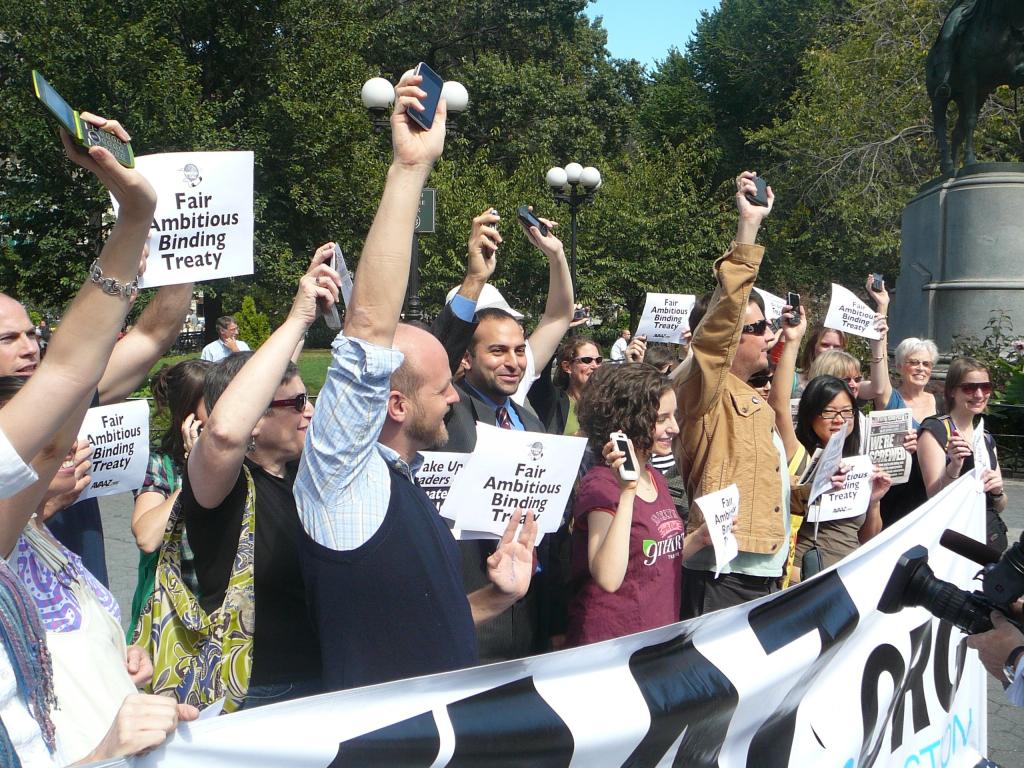The Second Circuit’s recent decision in Connecticut v. AEP, in which a coalition of state attorneys general sued electric power producers to cap and then reduce their carbon emissions, allows the public nuisance case to proceed and gave the environmental plaintiffs virtually everything they wanted. It should also give pause to those of us tempted to see judges as purely political: it was decided by Judges Peter W. Hall, a George W. Bush appointee from Vermont, and Joseph McLaughlin, a George H.W. Bush appointee from New York. Damn liberals. (The third panel member, one Sonia Sotomayor, is now busy with other things and did not sign the decision.).
A few aspects of the case stand out (aside from the obviously correct decision that a common-law tort suit is not a nonjusticiable political question). Most importantly, the Court’s holding on “displacement,” i.e. whether the Clean Air Act “displaces” the common law suit, actually makes EPA regulations somewhat more likely.
1) The case jumps out for a very expansive ruling on “standing,” i.e., which parties can bring suit. The Second Circuit held not only that states can bring climate change lawsuits (pretty much a slam dunk after Massachusetts v. EPA), but so can municipalities, and even private nonprofits. This is waving a red flag in front of the bull that is Chief Justice John Roberts.
2) The Court held that the suit is properly brought under federal, not state, common law. I have argued that this is a bad idea, because it essentially tells one federal district judge to take large swathes of the power grid into receivership. (My view is that the best tack is to make it a matter of state common law, with individual state Supreme Courts deciding on damages). Ruling this way on the federal v. state question means that lawsuits against automakers, which would have been pre-empted if the case was based on state law, can now go ahead. California’s own lawsuit against the automakers was settled, but other plaintiffs will, like California’s Governor, be bock.
3) By holding that the nuisance claims came under federal law, it had to determine whether the Clean Air Act “displaces” federal common law, thereby making it a dead letter. Dicta in previous decisions suggest that it is far easier for federal law to displace federal common law than it is for the same statutes to pre-empt state law, but there is also contrary dicta, and the Second Circuit used the latter to hold that there was no displacement.
But wait a minute, you might say: didn’t the Supreme Court already hold in Massachusetts v. EPA that EPA has the authority to regulate carbon dioxide? And hasn’t Obama’s EPA already proposed finding that carbon dioxide is a threat to human health?
No matter, replied the Second Circuit: the finding is only “proposed” and in any event, the EPA’s regulation only applies to mobile sources, not stationary sources like power plants. Thus–and here is the kicker–until the EPA actually starts regulating all sources of carbon dioxide, the Court said that it can’t really determine whether or not displacement has occurred.
This holding is potentially significant, because it can put polluters in a real bind. Their normal strategy is to tie up new regulations in the courts for several years–maybe until they can get a more friendly administration. But now, the Second Circuit has told them that the only way to get rid of the public nuisance lawsuit is to let those regulations go into effect. The judges have told the power companies to choose their poison.
To the extent that you think regulation is better than common-law remedies, you should like this posture. Had the Second Circuit just held that the Clean Air Act does not displace the common law, it would have given the power companies no incentive to back off challenging new EPA regulations. The Court has provided them with a sort of carrot to let the rulemaking process run its course. It’s not as strong a carrot as one might like, because the Second Circuit hinted strongly that the Clean Air Act would not displace even if EPA begins to regulate. But it leaves open the possibility.
What now? It would be over-optimistic to claim that the decision will have an immediate impact. But it does help to ratchet up the pressure on those forces opposing federal climate change legislation.



